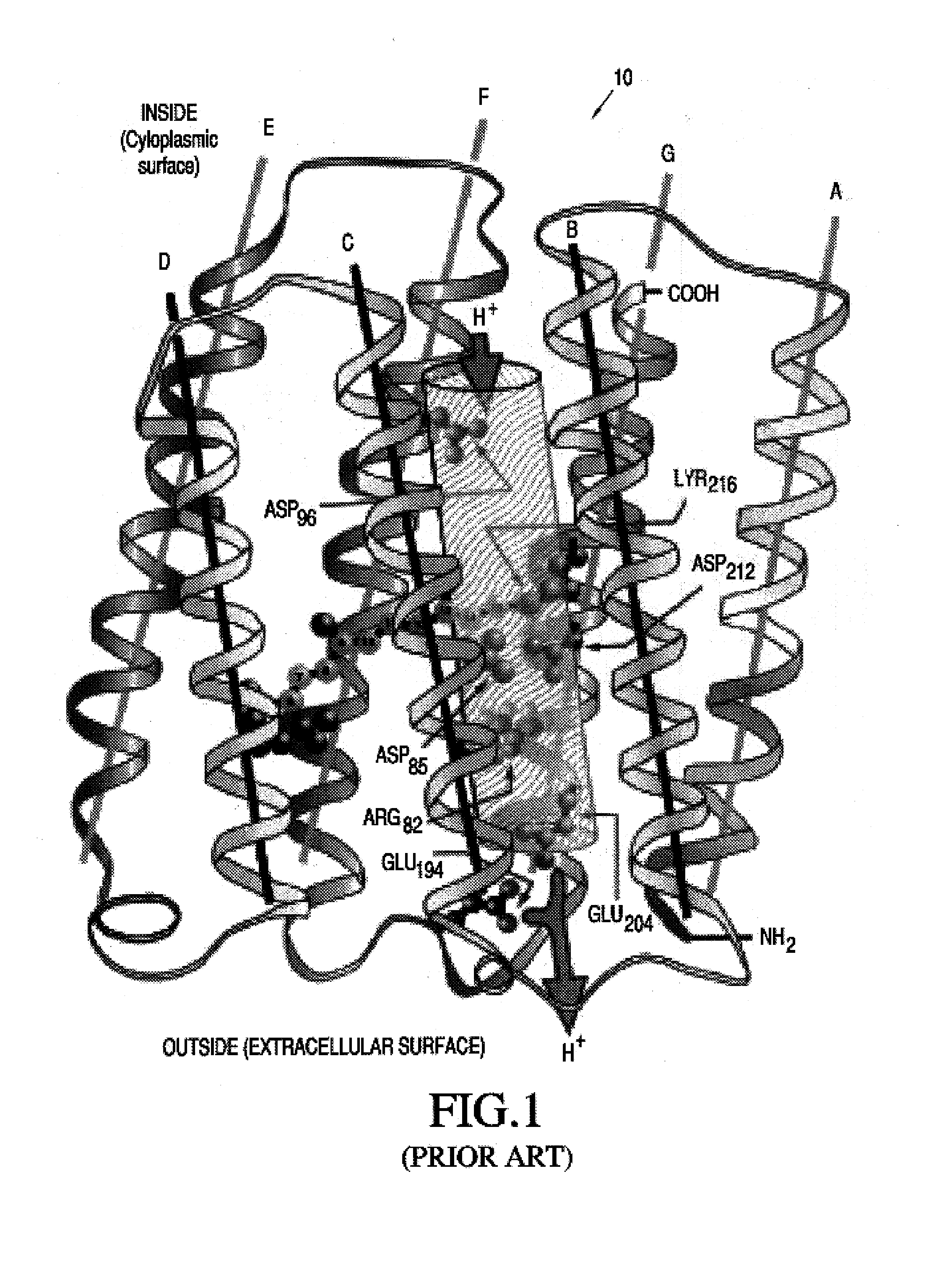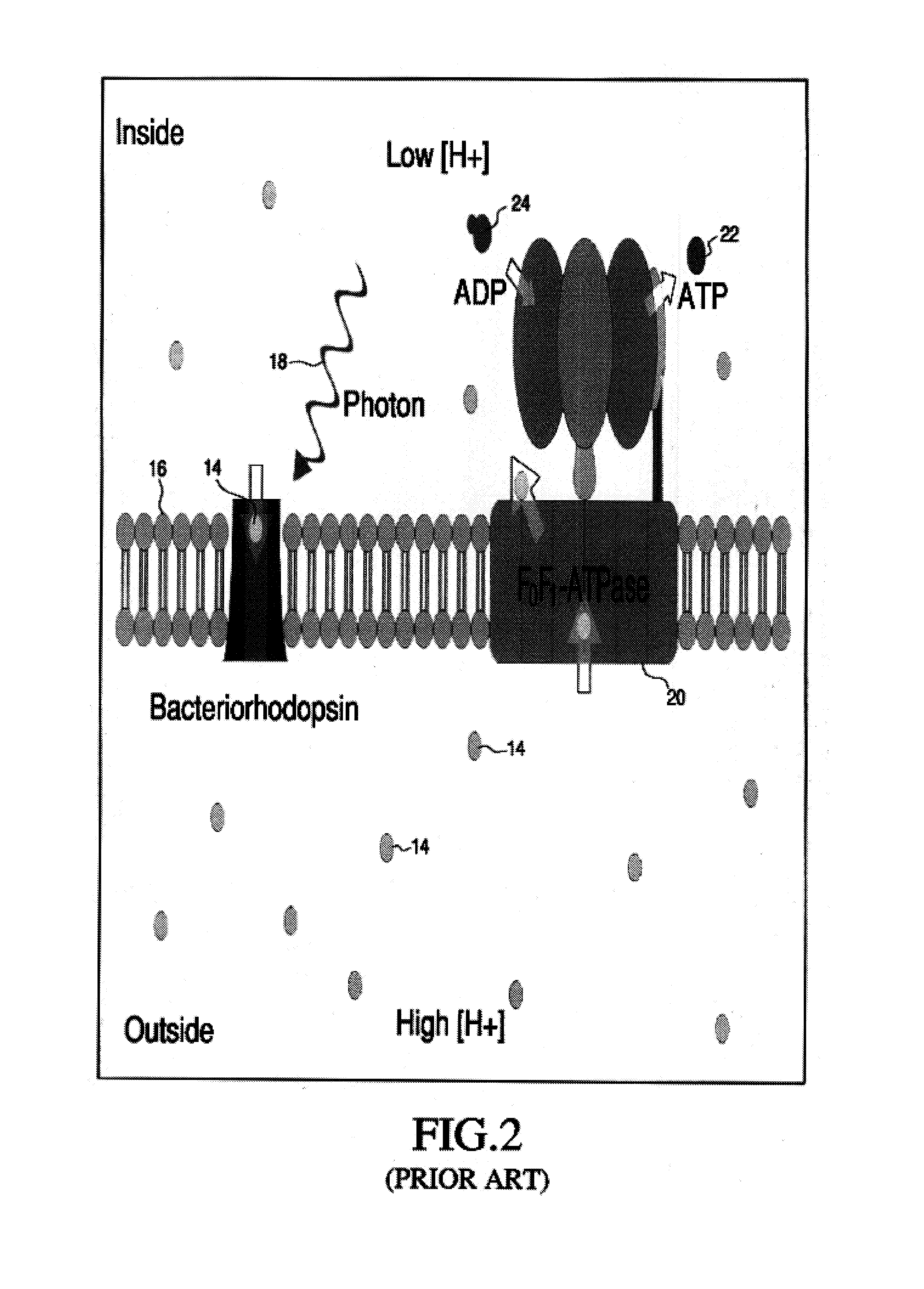Biomimetic membranes
a technology of biomimetic membranes and membranes, applied in the field of biomimetic membranes, can solve the problems of reducing size and weight, not progressing as quickly in the direction of chemiluminescene/bioluminescence, and achieving the effect of no weight cost and low cos
- Summary
- Abstract
- Description
- Claims
- Application Information
AI Technical Summary
Benefits of technology
Problems solved by technology
Method used
Image
Examples
Embodiment Construction
[0032]In one form of the invention, bacteriorhodopsin and cytochrome oxidase are integrated into a biocompatible polymer membrane in contact with microfabricated electrodes. The operation of the proposed device can be best understood after bacteriorhodopsin, cytochrome oxidase, and their integration into lipid and polymer membranes are understood. All three have been extensively studied and have a wide body of literature concerning their synthesis and function.
[0033]Bacteriorhodopsin (BR), the most widely studied ion transport protein, is a 26 kD molecular weight proton transporter, illustrated at 10 in FIG. 1, found within the cell membrane of Halobacterium salinarium, a halophilic archaebacterium that thrives in brightly lit brines and marshes. BR allows H. salinarium to survive in anaerobic environments; when there is insufficient oxygen for the process of respiration to occur, BR takes its place. As illustrated in FIG. 2, the BR 12 cell transports protons 14 across a cell membra...
PUM
| Property | Measurement | Unit |
|---|---|---|
| thickness | aaaaa | aaaaa |
| thickness | aaaaa | aaaaa |
| total time | aaaaa | aaaaa |
Abstract
Description
Claims
Application Information
 Login to View More
Login to View More - R&D
- Intellectual Property
- Life Sciences
- Materials
- Tech Scout
- Unparalleled Data Quality
- Higher Quality Content
- 60% Fewer Hallucinations
Browse by: Latest US Patents, China's latest patents, Technical Efficacy Thesaurus, Application Domain, Technology Topic, Popular Technical Reports.
© 2025 PatSnap. All rights reserved.Legal|Privacy policy|Modern Slavery Act Transparency Statement|Sitemap|About US| Contact US: help@patsnap.com



